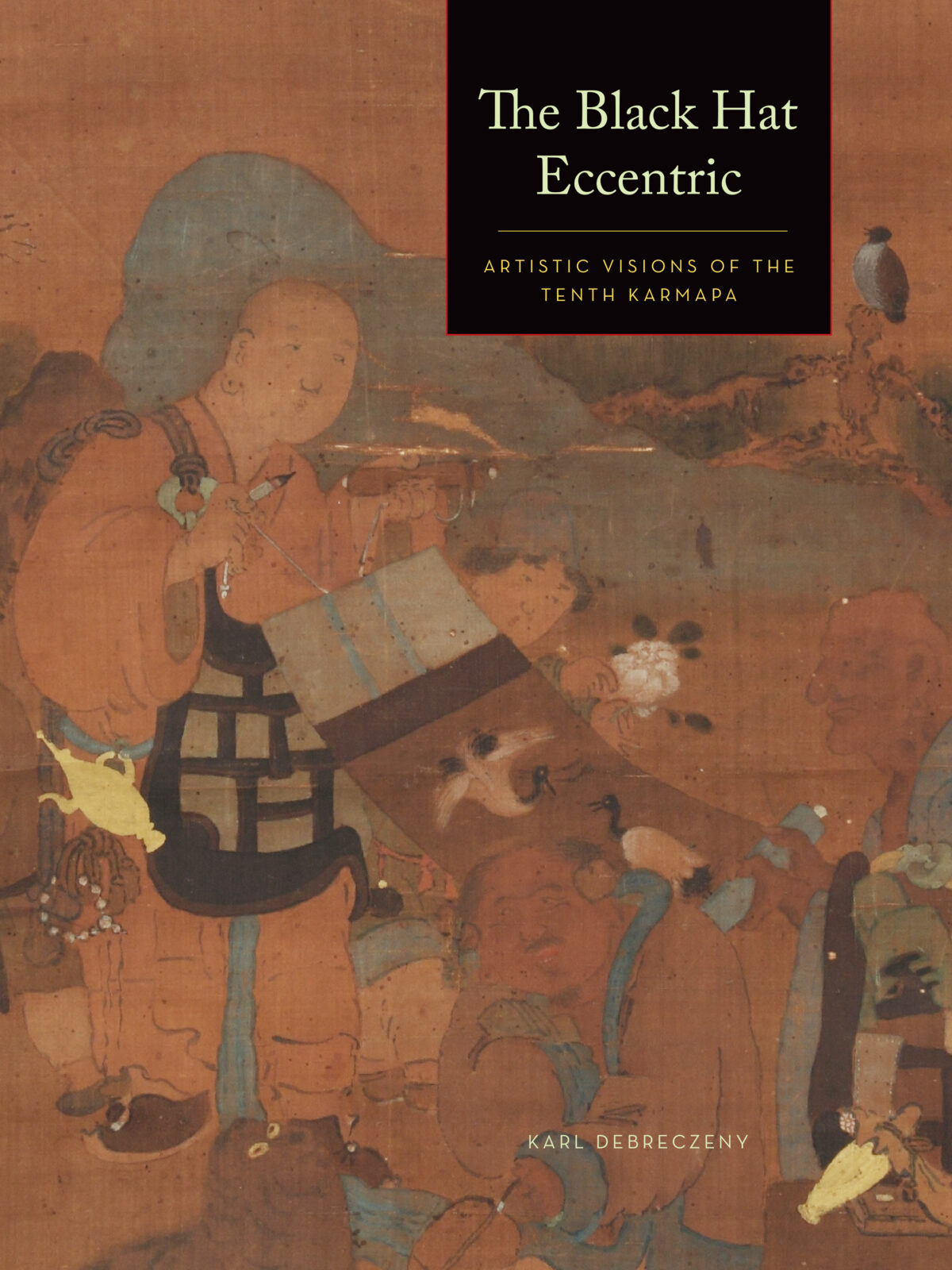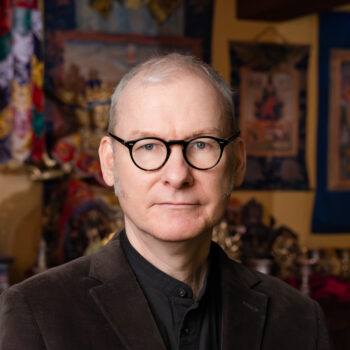The Tenth Karmapa Choying Dorje (1604-1674) was not only leader of the Karma Kagyu School of Tibetan Buddhism but also famous as a great artistic innovator. One of the most original and eccentric figures in the history of Tibetan art, he combined different compositional and figural models as well as styles, even mixing genres to create a very personal visual idiom full of charm, wit, and humor. A sensitive and playful depiction of animals is especially distinctive, making his works both intimate and directly accessible. The life of this artist is well documented in Tibetan sources, which provide an alternative historical narrative of the tumultuous seventeenth century as well as a new perspective on Tibetan art history.
The Black Hat Eccentric is the first publication to focus on works by the hand of a single Tibetan historical artist. The centerpiece is an inscribed set of paintings dated 1660 from Lijiang in southwestern China. Paintings from sets by the Karmapa’s workshop form the other anchor for the project and demonstrate that teams of artists were trained in the Tenth Karmapa’s fascinating and enigmatic style. Individual paintings and sculptures attributed to the Tenth Karmapa from collections worldwide are also considered and contextualized by these two aspects of his artistic production.
Debreczeny, Karl, Ian A. Alsop, David P. Jackson, and Irmgard Mengele. The Black Hat Eccentric: Artistic Visions of the Tenth Karmapa. New York: Rubin Museum of Art; Distributed by University of Washington Press, 2012.
Find elsewhere:
Library of Congress WorldCat

